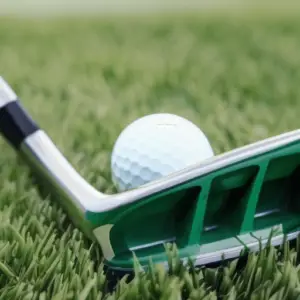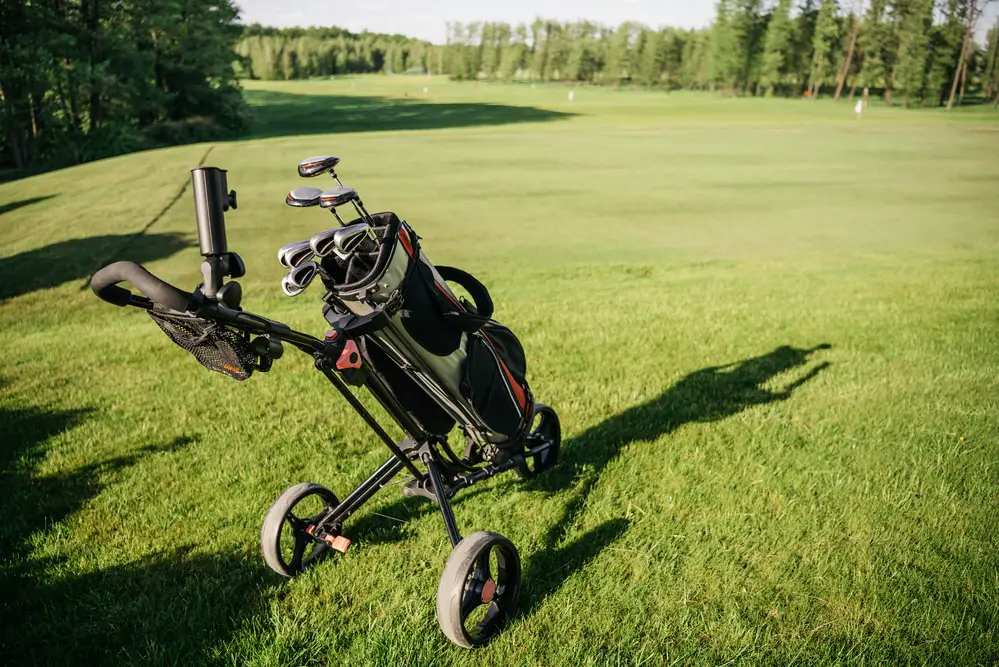Last Updated on June 5, 2023
Are you a beginner golfer looking to improve your game? If so, then the golf chipper is an essential tool for improving accuracy and consistency around the green. As any experienced golfer knows, using a chipper correctly can save strokes on every hole. In this article, I’ll explain how to use a golf chipper like an expert.
First of all, it’s important to understand why the golf chipper is such an effective tool. It has several advantages compared with other clubs in your bag – its design allows you to hit shots that fly lower than normal pitches or chips and land softly on the green. This makes it ideal for those tricky shots near bunkers or when there are obstacles between you and the pin.
Second, mastering the fundamentals of the golf chipper takes practice and patience. There are some key tips which will help you get comfortable with this club quickly – from setting up properly at address to choosing the right loft angle and swing path. With these basics mastered, you’ll be able to confidently select the right club for each shot around the green.
So if you’re ready to take your short-game skills up a notch, keep reading!
Preparing To Chip

Getting ready to chip is essential for a successful shot. If you don’t have the right setup, stance or grip, it doesn’t matter how much practice you do – the ball won’t go where you want it to! To start with, your golf chipper should be set up at shoulder-width apart. Your feet should also be shoulder-width apart and slightly open towards your target line. Make sure your weight is centred over the middle of both feet and that there’s no pressure on either heel or toe. When gripping the club, place your hands just inside of your front thigh and keep them close together for the best results. Keep in mind that by maintaining this position throughout your swing, you’ll generate more power and accuracy when striking the ball. Finally, some good practice drills include hitting from various distances; try to hit 10 balls from each distance until you feel comfortable with controlling the flight of each one.
Stance And Positioning
When it comes to using a golf chipper, stance and positioning are essential. To get the most out of your club, you must feel comfortable in your posture and have the correct balance when setting up for the shot. Your feet should be slightly wider than shoulder-width apart, with your weight distributed evenly on both feet. Bend your knees ever so slightly and make sure that they are not locked. This will help you maintain stability during the swing. With regards to arms and hands, keep them relaxed while keeping some tension in order to generate power as you chip away at the hole.
Overall, establishing the right golfing or chipping stance can go a long way towards helping you hit better shots consistently. Make sure you pay attention to details such as body position, arm length, head placement and grip pressure – all these factors come together to form an effective golfing posture!
Grip And Alignment
Now that you’ve established your stance and positioning, it’s time to focus on the grip and alignment basics of using a golf chipper. Your grip technique should be similar to how you would hold any other club in your bag; however, some players like to use what is known as a “chipper grip” for added control. To do this, use an overlapping or interlocking grip with both hands and make sure each hand is slightly stronger than the other – this helps keep the clubface square while making contact with the ball.
When aiming and aligning yourself with the target, remember that good golf alignment begins at address. As you look down at the ball, check that your left foot (for right-handed players) is slightly back from the centre, which will help promote more power through impact. From there, aim your body towards where you want the ball to go – this gives direction to your shot so you can better control its accuracy. Finally, adjust your feet until they are perpendicular to the intended path of travel; not only does this ensure proper balance, but it also allows for consistent swing paths throughout your round.
Backswing And Downswing Technique

When chipping, it’s important to remember that a proper backswing and downswing technique is key. To begin your golf swing, you should stand with your feet shoulder-width apart. Make sure the grip of the club feels comfortable in your hands, and ensure that your arms are slightly bent throughout the entire swing. As you move into the backswing phase, pivot on the balls of your feet and turn through the shoulders while keeping your arms straight. The length of time spent on this stage will depend upon how far from the hole you need to chip. During this step, try to keep your hands as low as possible; this will help establish a consistent contact point for all types of chip shots.
Once you have completed the backswing, it’s time to transition into the downswing portion of chipping. This part of the swing requires more finesse than power; focus on controlling speed and precision during this stage instead of generating maximum force. Move forward onto your left foot and drive towards an imaginary target line at impact – be sure not to lift up too soon or too late! At address, remain aware that body weight should stay predominantly over your left foot until after impact has taken place. With practice and repetition, these techniques will become second nature when approaching any kind of chip shot!
Maintenance Tips For Your Chipper
Now that you know the basics of how to use a golf chipper, it’s time to learn some maintenance tips. Taking good care of your golf chipper is essential for performance and longevity. Here are some useful tips for keeping your club in great shape:
First, make sure to regularly clean your golf chipper with a soft cloth after each round or practice session. This will help remove dirt and debris from the grooves on the face of the head. Additionally, wipe down the shaft with mild soap and water periodically to ensure no buildup accumulates over time. You may also want to consider using a protective wax or other similar product on the head and shaft before playing in wet conditions.
It’s also important to check any screws or bolts holding components together, such as the grip and hosel. Make sure these parts have not loosened during regular play or become damaged due to wear and tear. If necessary, replace them with new ones available at most sporting goods stores. Finally, store your clubs in a dry place when not in use, preferably indoors at room temperature without direct sunlight exposure. By following these simple steps for golf chipper maintenance, you can keep your clubs performing their best!
Conclusion
In conclusion, a golf chipper is an invaluable tool for any golfer looking to improve their short game. It’s important to understand the difference between a regular club and a chipper so you can take advantage of its unique design features. With the right amount of practice, you’ll be able to hit shots with more accuracy and control around the green. Don’t forget that, like all your clubs, it’s best to replace your chipper regularly in order to get the most out of it.
Overall, mastering the use of a golf chipper will give you an edge on the course and help you lower your scores. My advice would be to spend time practising with one until you gain confidence in using it during your rounds. Just remember: keep it simple, stay relaxed at impact and trust yourself! If you do these things consistently, then I’m sure you’ll see great results from your new trusted weapon – the golf chipper!
So go grab yours now and start improving today – happy chipping!



